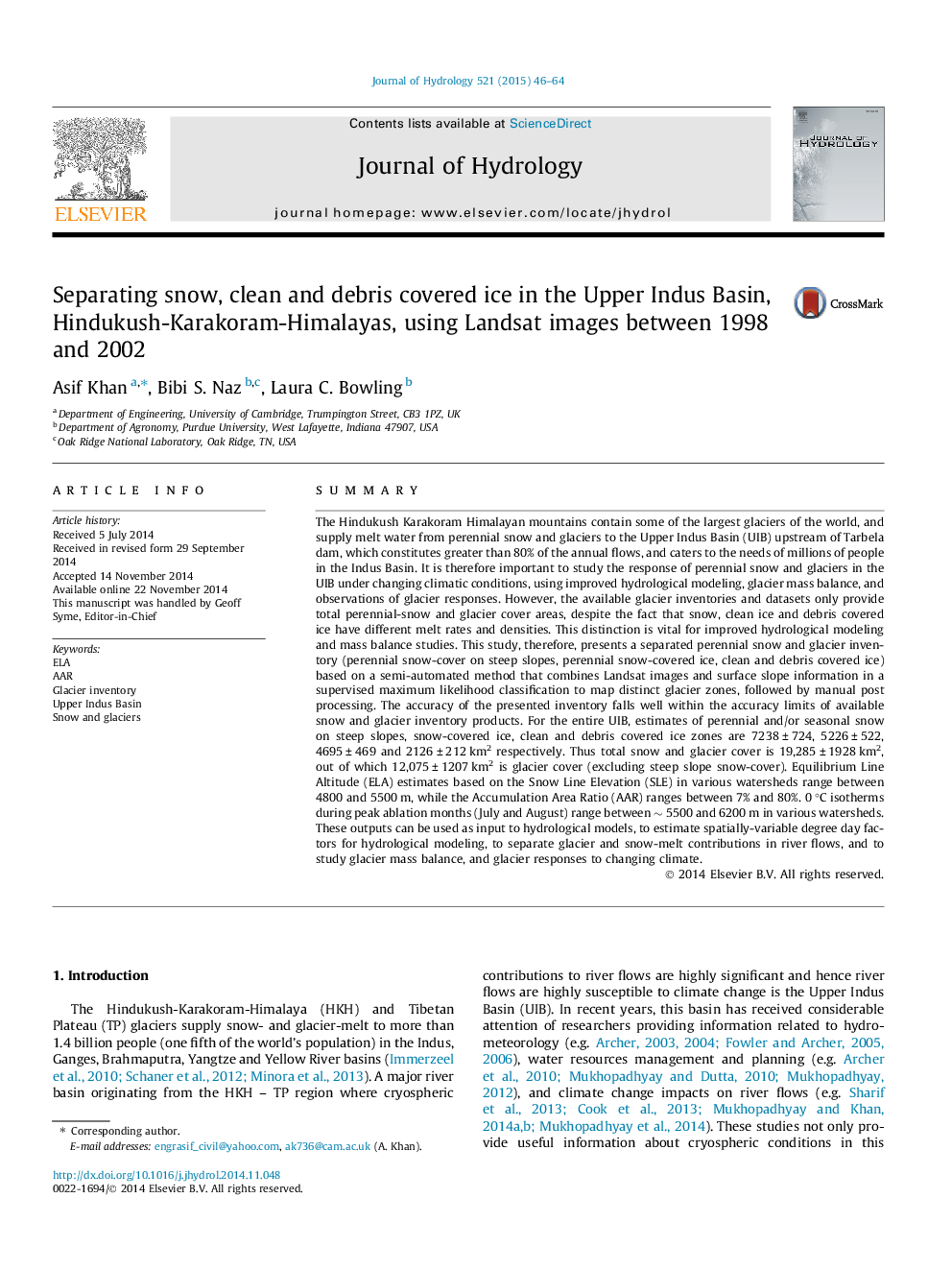| Article ID | Journal | Published Year | Pages | File Type |
|---|---|---|---|---|
| 6411537 | Journal of Hydrology | 2015 | 19 Pages |
â¢Separated snow-glacier inventory for the Upper Indus Basin (UIB) is presented.â¢Snow at steep slopes, snow-covered ice, clean ice and debris covered ice are presented.â¢Estimates of above mentioned classes are 7238, 5226, 4695 and 2126 km2 respectively.â¢In the entire UIB, Equilibrium Line Altitude (ELA) ranges between 4800 and 5500 m.â¢Accumulation Area Ratio (AAR) ranges between 7% and 80% in various watersheds.
SummaryThe Hindukush Karakoram Himalayan mountains contain some of the largest glaciers of the world, and supply melt water from perennial snow and glaciers to the Upper Indus Basin (UIB) upstream of Tarbela dam, which constitutes greater than 80% of the annual flows, and caters to the needs of millions of people in the Indus Basin. It is therefore important to study the response of perennial snow and glaciers in the UIB under changing climatic conditions, using improved hydrological modeling, glacier mass balance, and observations of glacier responses. However, the available glacier inventories and datasets only provide total perennial-snow and glacier cover areas, despite the fact that snow, clean ice and debris covered ice have different melt rates and densities. This distinction is vital for improved hydrological modeling and mass balance studies. This study, therefore, presents a separated perennial snow and glacier inventory (perennial snow-cover on steep slopes, perennial snow-covered ice, clean and debris covered ice) based on a semi-automated method that combines Landsat images and surface slope information in a supervised maximum likelihood classification to map distinct glacier zones, followed by manual post processing. The accuracy of the presented inventory falls well within the accuracy limits of available snow and glacier inventory products. For the entire UIB, estimates of perennial and/or seasonal snow on steep slopes, snow-covered ice, clean and debris covered ice zones are 7238 ± 724, 5226 ± 522, 4695 ± 469 and 2126 ± 212 km2 respectively. Thus total snow and glacier cover is 19,285 ± 1928 km2, out of which 12,075 ± 1207 km2 is glacier cover (excluding steep slope snow-cover). Equilibrium Line Altitude (ELA) estimates based on the Snow Line Elevation (SLE) in various watersheds range between 4800 and 5500 m, while the Accumulation Area Ratio (AAR) ranges between 7% and 80%. 0 °C isotherms during peak ablation months (July and August) range between ⼠5500 and 6200 m in various watersheds. These outputs can be used as input to hydrological models, to estimate spatially-variable degree day factors for hydrological modeling, to separate glacier and snow-melt contributions in river flows, and to study glacier mass balance, and glacier responses to changing climate.
